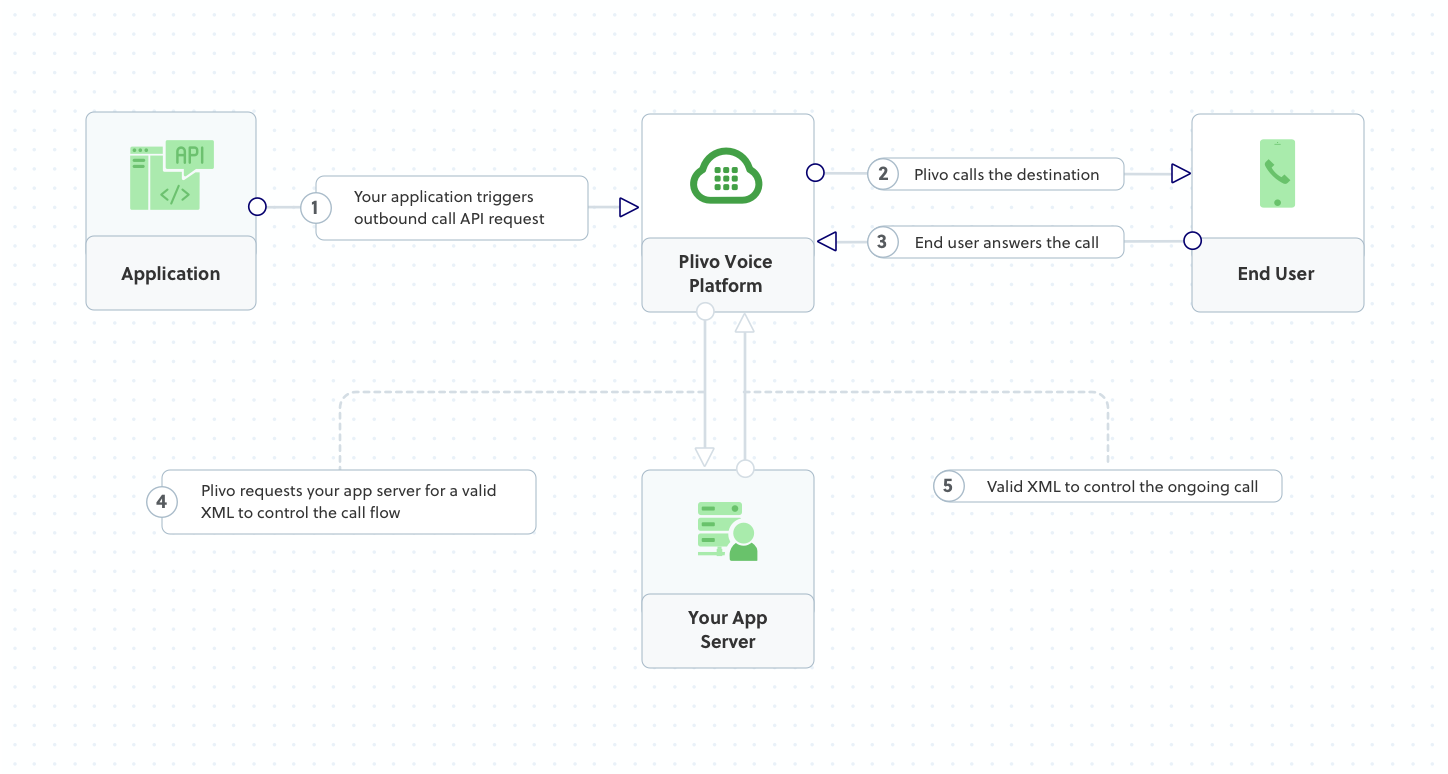- Node
- Ruby
- Python
- PHP
- .NET
- Java
- Go
Overview
This guide shows how to send audio notifications using voice calls. You can play recorded audio when the call recipient answers or use text-to-speech, as we show here, combining static text with dynamic information that Plivo gets from a variable.You can use voice notification for use cases such as:- Order notification
- Booking status
- Delivery status
- Flight cancellation/rescheduling
- Two-factor authentication/one-time password
- New offer notification
- Account balance notification
- Using XML
Here’s how to use Plivo APIs and XML to implement voice notifications.
How it works

Prerequisites
To get started, you need a Plivo account — sign up with your work email address if you don’t have one already. If this is your first time using Plivo APIs, follow our instructions to set up a Node.js development environment.Create a voice notification application in Node.js
Create a file calledMakecall.js and paste into it this code.Note:
We recommend that you store your credentials in the
auth_id and auth_token environment variables, to avoid the possibility of accidentally committing them to source control. If you do this, you can initialize the client with no arguments and Plivo will automatically fetch the values from the environment variables. You can use process.env to store environment variables and fetch them while initializing the client.